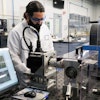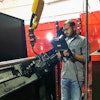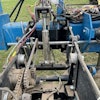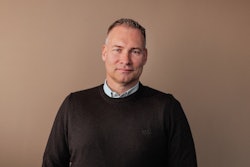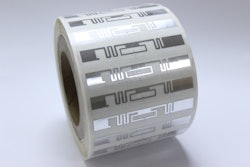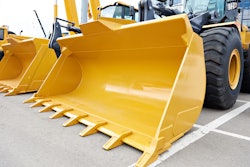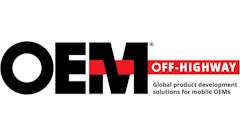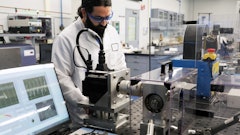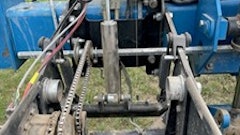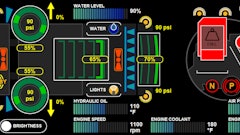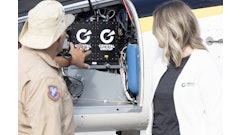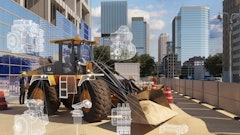
To assess emerging trends and the current and future OEM landscape, the OEM Off-Highway team team spoke with experts throughout the industry. In our conversation below, Eric Alström, president at Danfoss Power Solutions, offers insights into today's challenges and tomorrow's opportunities.
Alström has broad management experience from leading positions in global industrial companies. In 2012, he joined Danfoss as president and CEO for Sauer-Danfoss Inc. Danfoss was a majority shareholder and bought the remaining shares in 2013. The company was renamed to Danfoss Power Solutions and Alström was appointed president for this Danfoss business segment. Prior to his current role, he also held leadership positions at Benteler Automotive and General Motors.
Alström holds a master's degree in management from Stanford University and a bachelor's degree in business administration and economics from Gothenburg University.
Read on for Alström's insights into the state of the industry.
1. What challenges most affected the mobile OEM landscape in 2023?
Some of the OEMs we collaborate with work hard to keep up with technology advancements. Large OEMs have the means to dedicate teams and resources to exploring areas such as autonomy and electrification. The same can’t always be said for small and mid-sized OEMs, and it’s often the smaller OEMs developing niche machinery that stand to benefit the most. If we look at autonomy, for example, the more specific the task the machine performs, the more it makes sense to add autonomous or semi-autonomous functionality. Autonomy and electrification will only accelerate, so this will be an ongoing challenge. But the outlook need not be grim. Suppliers like Danfoss have teams in place to address the need. The Danfoss Autonomous Custom Engineering Services (ACES) team, for example, takes on autonomous engineering projects of varying scopes, and engineers at our Application Development Centers regularly work with customers on proof-of-concept machines.
2. What are your predictions for the mobile OEM landscape in 2024?
An ongoing trend is the drive for machine differentiation and customization. That is sometimes done with software today, but also with superior hardware, yielding better efficiency and productivity. This means we’ll continue to see more integration of software, embedded sensing, and the use and management of data, combined with great hardware, to keep customers tied to brands. What comes into greater focus because of this trend is the need to attract and hire more software engineers and, of course, mechanical engineers who can drive step-change improvement in hardware. Similarly, many sectors within the off-highway industry are in the midst of an electrification transformation. This technology transition creates the need for new competencies, putting workforce pressures on a number of companies. To hire top talent, we must outcompete household names in adjacent sectors, which will require new recruitment strategies. Danfoss actively collaborates with universities all over the world, not only to further software and hardware development, but also to overcome the old-fashioned image of hydraulics and excite upcoming engineers about the possibilities in the industry. The good news is that many engineering graduates see the opportunities in off-highway and join us, and other system suppliers, to drive improvements in our industry.
3. Where do you see the most potential for improvement or advancement in 2024?
At Danfoss, we see the greatest potential for advancement in autonomy, electrification, and telematics and data access. When we say autonomy, we’re not talking driverless machines — at least not yet. We’re talking task automation that makes it easier to do repeatable work in a low-cost way. The state of the art is semi-autonomous functionality that leads to safer, more productive, and more precise machines, but we expect to see more steps toward Level 4 autonomy, or supervised autonomy, in 2024. The electrification of mobile machines is coming; it’s already here to some degree. We're still in the early stages in many sectors, but as buyers become more sensitive to emissions and the precision of controllability, electrification will accelerate. We have no doubt about that. Municipalities and legislation are driving this forward as well. For instance, there are cities in Japan and Scandinavia that have legislated against emissions and noise pollution, making electrically powered and propelled machinery the only viable solution. Danfoss has engineered battery-electric construction equipment, and even grid-powered equipment, at work in cities as you read this.As for telematics, we’ll see system capabilities continue to increase, which will help reduce machine downtime, increase efficiency, improve performance, and even provide insights to help OEMs optimize system design. We’ve been working on predictive maintenance proofs of concept at Danfoss for many years, bringing us closer to a highly anticipated end goal of telematics. We also see great opportunities in mechanical engineering of hardware as well. For instance, digitally controlled hydrostatic pumps and motors can generate step-change improvements, but only if the mechanical properties of those products are improved and combined with software functionality.
4. What will be the biggest challenge for OEMs and the industry in general in 2024?
The macroeconomic environment of borrowing costs will likely impact the market in 2024. Interest rates are much higher than usual, which will limit end users’ ability to finance new machines. This could have an impact not only on OEMs, but further into the supply base as well. In Europe as well as the U.S., single- and multi-family housing has come to all but a standstill, and infrastructure projects only proceed with government funding. In addition, grain and commodity prices are fluctuating wildly, slowing down the agriculture machine replacement industry. Hence, the off-highway industry is in for a down cycle – something we are prepared for as this happens on a regular basis.Finding labor could also be a challenge, especially in the U.S. where we’re currently at near-historic low unemployment rates. The generation currently entering the workforce has different expectations of employers and companies in general. They tend to be more purpose-driven and place a higher importance on sustainability and diversity. They expect companies to be better corporate citizens. At Danfoss, we believe our Core and Clear strategy – which is centered on environmental, social, and governance (ESG) and diversity, equity, and inclusion (DEI) – is laying the foundation we need to attract this generation of workers, as well as those to come. In addition, being family-owned gives us a longer planning horizon. We don’t think in quarters, but in generations. This long-term view gives us unique freedom to drive innovation further and deeper than many companies with a different ownership structure.
5. What factors should engineers and their companies consider when making decisions in the mobile OEM space in 2024?
As more OEM production lines produce both conventional and electric machines, we see a significant opportunity for engineers to streamline customization by specifying technology-agnostic solutions. If the OEM has one model with electric motors and another with hydraulic motors, for example, finding commonalities across the hydraulic and electric platforms can reduce expense and future proof system architecture. Our Dextreme system is an example of such a solution. The system works whether you're producing battery-electric or traditional diesel-driven machines.
6. Please highlight ONE recently introduced product from your company that meets a specific, pressing need in the mobile OEM space, and describe briefly how the product is uniquely designed to meet that need.
Earlier this year, we introduced our Dextreme systems pathway for excavators. With the Danfoss Digital Displacement pump at its core, Dextreme systems improve excavator energy efficiency by 15% to 50%, regardless of power source. Improving efficiency reduces fuel use and carbon emissions, which is incredibly important because excavators account for 50% of all CO2 emissions generated by construction machinery. Every excavator OEM has a 2030 target for CO2 reduction. 2030 is only six years away, which means now’s the time to develop a roadmap and take action. Dextreme systems focus on decarbonizing medium to large excavators to allow OEMs and their customers to achieve their emissions-reduction targets. Its technology pathway of systems with increasing energy efficiency that work with any fuel source is a future proof choice for cost-effective and significant decarbonization.
7. What are some of your company's priorities in 2024 with regard to electrification, automation, innovation, emission reduction and/or other emerging trends?
Danfoss is focused on accelerating electrification and autonomy, developing more efficient hydraulic solutions, and increasing the speed of innovation. That last one is particularly important for us. Innovation is our passion, deeply rooted in the Danfoss DNA. We focus on driving sustainable innovation that helps OEMs differentiate their machines and systems. At our Application Development Centers (which aren’t limited to the off-highway industry – we also have marine ADCs), our engineers work collaboratively with customers to reduce design cycles and speed up research and development, helping them get to market quickly with machines that stand out from the competition. It’s this partnership combined with our technology leadership and deep application know-how that will help us achieve our ultimate goal: to become our customers’ preferred partner.
For additional insights on the state of the industry and what's to come in 2024, click here to read more.

